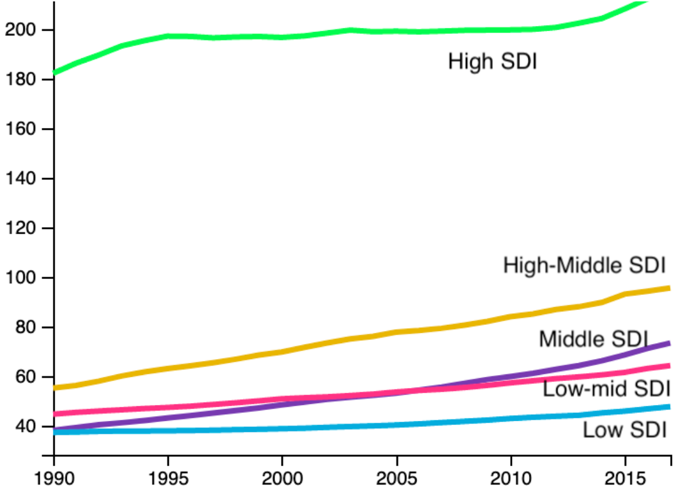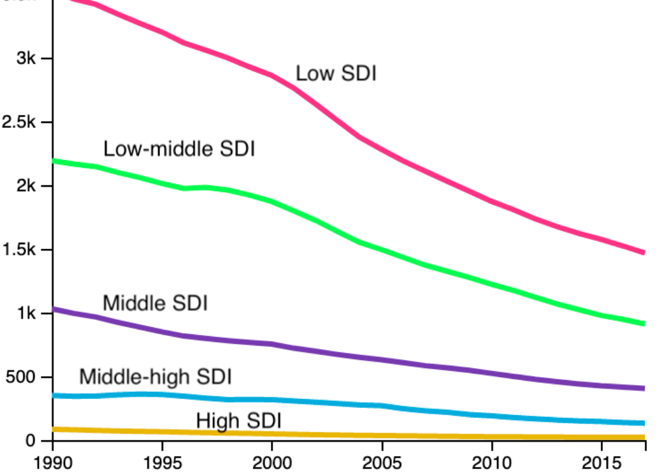(UroToday.com) Globally, prostate cancer is a disease of the aging male, with an average age of diagnosis of 65 years, which increases in prevalence with exposure to screening and diagnostic testing. In high-income countries, prostate cancer is already prevalent and exerting a significant societal burden, with morbidity secondary to disease and treatment. As life expectancy and access to testing increases in low-income countries, so will prevalence of age-related diseases. The Global Burden of Disease dataset is an aggregation of worldwide cancer registries and health data systems that reports a global and regional assessment of disease impact. At the 2020 American Urological Association Virtual Annual Meeting, Bryn Launer and colleagues assessed the global interaction of economic status with prostate cancer burden.
Using the Global Burden of Disease database, 1,171 worldwide registries, and health registration systems from 1990-2017 were aggregated for prostate cancer disease codes and outcomes. Calculation of disability-adjusted life years (DALYs) was performed (years lived with disease + years life lost) and segregated by sociodemographic status quintile. The Global Burden of Disease standardized values for sociodemographic status was utilized, derived from composite averages of income/capita, educational attainment, and fertility rates. For comparison, the authors performed a similar assessment of tuberculosis, a ubiquitous disease with a pronounced effect on developing countries.
Prostate cancer exerts a burden of disease that is vastly higher in the top quintile of sociodemographic status. The three lowest sociodemographic status quintiles represent the majority of the global population but are currently less impacted by prostate cancer:
Conversely, tuberculosis has its highest impact on the lowest sociodemographic status levels, although these rates are declining:
There are several limitations of this study as noted by the authors:
- Variability in standards of data gathering across the planet
- Challenges in diagnostic accuracy, especially in indolent disease processes such as prostate cancer
- Disease severity and medical claims data are generalized from high-income countries, ultimately underestimating morbidity in low- and middle-income countries
Dr. Launer concluded with the following take-home points:
- As a global disease, prostate cancer predominantly affects high sociodemographic status men who enjoy a longer life expectancy in which to discover and suffer from this disease, as well as a greater exposure to screening and diagnosis
- As lower sociodemographic status men are elevated in health and income, reallocation of DALYs from diseases of low sociodemographic status such as tuberculosis will occur and a substantially greater burden of prostate cancer can be expected
- These epidemiologic trends have important implications for the allocation of resources and urologic workforce
Presented by: Bryn Launer, University of Colorado School of Medicine, Denver, CO, USA
Written by: Zachary Klaassen, MD, MSc – Assistant Professor of Urology, Georgia Cancer Center, Augusta University/Medical College of Georgia, Augusta, GA, USA, Twitter: @zklaassen_md, at the 2020 American Urological Association (AUA) Annual Meeting, Virtual Experience #AUA20, June 27- 28, 2020.


